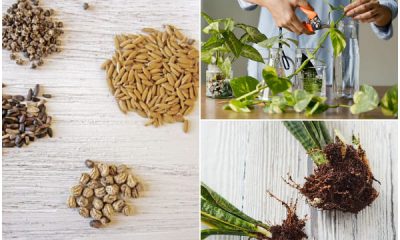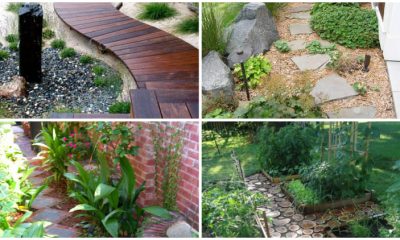FLOWERS
16 Purple Flowering Shrubs to Adorn Your Landscape

If you want your yard to spruce up with a color symbolic of luxury, royalty, and elegance, these purple shrubs are great options. Besides being created as a privacy row to block your neighbor’s line of sight into your yard, they also make fantastic statement pieces or backdrops behind your flowerbed. They are so easy to grow with minimal care from the gardeners too!
1. Golden Dewdrops
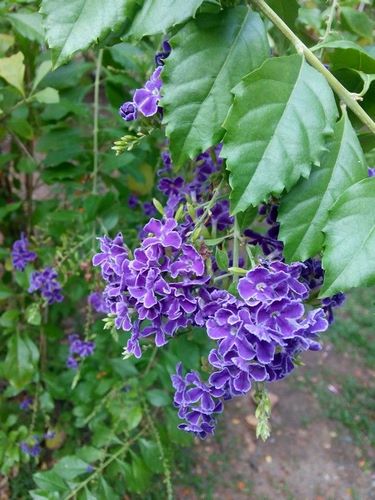 Image source: pinterest
Image source: pinterest
Despite the confusing moniker, golden dewdrops aren’t golden at all. In fact, they produce flowers in beautiful shades of purple. These plants can be grown as small plants in the northern growing zone, but when cultivated in zones warmer than zone 9, golden dewdrops will blossom into large, sprawling shrubs.
They can often reach more than 6 feet tall and wide. For the best and most vibrant purple hues, plant your golden dewdrops in full sun. Partial shade is also tolerated.
2. Azalea
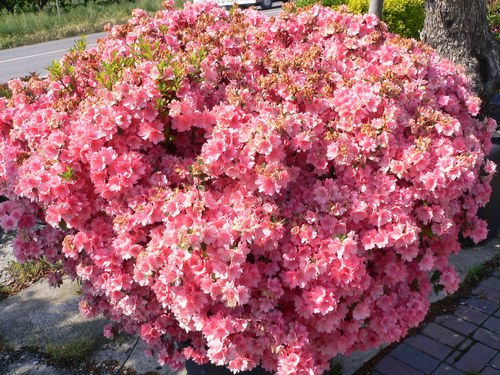 Image source: flickr
Image source: flickr
The azalea is a plant of many colors, including red, white, orange, and yellow. However, lavender is one of the most popular colors. There are several purple azalea cultivars, including ‘Purple Gem,’ ‘Robles,’ ‘Bloom-a-Thon Lavender’, and ‘Conlee.’
3. Butterfly Bush
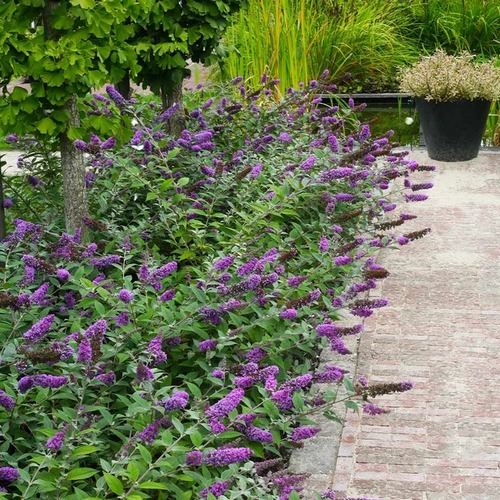 Image source: fast-growing-trees
Image source: fast-growing-trees
Hardy to zone 5, the butterfly bush will stay evergreen year-round if you live south of zone 8. This hardy shrub prefers well-draining soil and full sunlight. Plant one of these gorgeous shrubs in your backyard – which is a major attraction to butterflies and other pollinators – and you’ll be rewarded with gorgeous colors.
A variety of purple shades are available, including lilac and plum, with multiple flowers produced on spiked trusses. You don’t have to limit yourself just to purple, either – the butterfly bush can be found in multiple hues.
4. Lavender
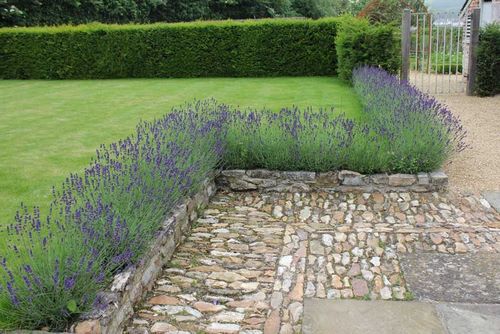 Image source: podgardening
Image source: podgardening
Lavender is technically an herb, but it can also be cultivated to grow as a sub-shrub, too. This plant is beautiful and also has a variety of culinary and medicinal purposes. It produces plenty of blossoms first thing in the summer. It’s not only deer-resistant, but it’s drought-tolerant, too. IT has fragrant leaves and blossoms that will attract all kinds of visitors to your lawn!
5. Lilacs
 Image source: instagram
Image source: instagram
Lilacs are adaptable and hardy plants, growing well from zone 3 to 9. This shrub requires minimal care and will reward you for your few efforts with fragrant purple flowers each spring. Some varieties go dormant in the winter, so it’s best to plant in the fall.
6. Caryopteris
 Image source: mailordertrees
Image source: mailordertrees
Caryopteris is often referred to by names such as “bluebeard” and “blue mist,” but really, its color falls more between purple and blue. This flower has several varieties and is suited to zones 5 to 9. It blooms later in the summer so you’ll get color at a time of the year when color is sparse.
7. Bougainvilleas
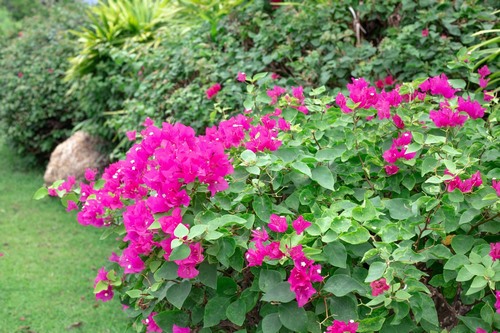 Image source: freepik
Image source: freepik
A tropical vining shrub, bougainvilleas grow well in zones 9 to 11. Most of these shrubs have single blooms, but you can also purchase them with double blooms for double the color. As a versatile shrub, the bougainvillea needs something to grow on, like a trellis.
8. Wisteria
 Image source: plantura.garden
Image source: plantura.garden
One of the hallmark plants of the South, wisteria is usually grown as a vine. However, it can also be trained to grow as a shrub if you’re good about pruning it regularly. This plant is worth a bit of extra maintenance, though, producing gorgeous racemes of breathtaking purple flowers. It grows well in zones 5 to 8.
9. Beautyberry
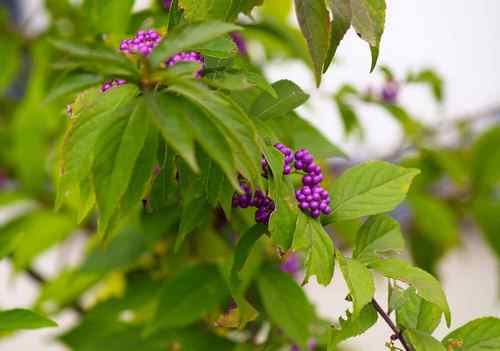 Image source: bigblogofgardening
Image source: bigblogofgardening
Although beautyberry is a shrub that technically produces white flowers in the late summer, what really will draw your attention is the purple berries that appear on the stems in the fall. There are many types of beautyberry that sport black-purple foliage, too, so you’ll be able to enjoy purple in many forms on this gorgeous shrub. It’s hardy in zones 5 to 8, with popular purple cultivars including ‘Purple Pearls’ and ‘Pearl Glam.’
10. Crape Myrtle
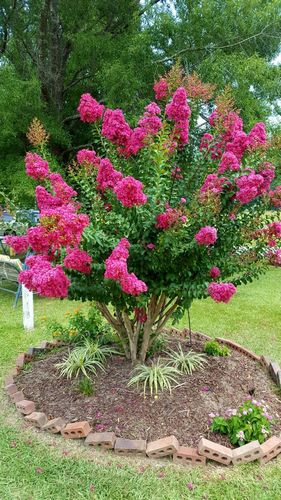 Image source: Neil Jackson27
Image source: Neil Jackson27
Cold-hardy to zone 7, crape myrtle is a plant that adores the heat. It can be grown in zones as cold as 5 as a woody sub-shrub but will produce the most prolific blooms in warmer growing zones.
No matter where you live, you’ll want to plant your crape myrtle in acidic soil and prune it back in half – this will enable the plant to push out more gorgeous blooms the following spring.
11. Hydrangea
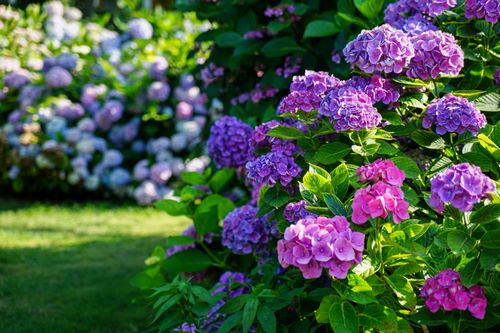 Image source: gardening
Image source: gardening
Hydrangeas can be found in all kinds of colors, but purple is one of the most striking shades available. You can grow this plant anywhere from zone 3 to 8. Choose a variety that is well-adapted to your growing zone. Although it will do well as a foundation shrub in a shady area of your yard, it will bloom more prolifically when it gets at least four hours of sunlight per day. Make sure your soil is well-draining, too, as hydrangeas don’t like to have wet feet.
12. Russian Sage
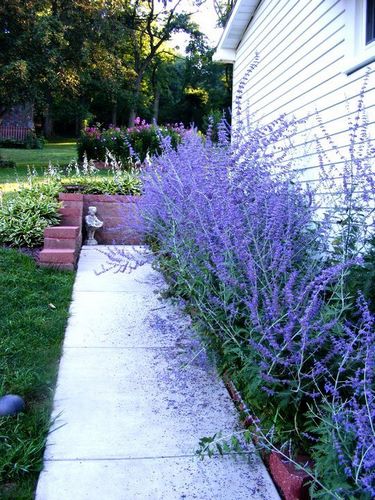 Image source: flickr
Image source: flickr
Russian sage is the perfect shrub to grow as a flower border, producing multiple tiny lavender flowers. It has small, silvery leaves and is a great filler plant. It can be grown between plants that have large, showy flowers and blooms well throughout the summer months. It grows up to five feet tall and is hardy in zones 4 to 9.
Planting a shrub with purple flowers will draw a ton of attention to your lawn. You’ll be able to create a breathtaking statement piece or border that will allow you to enjoy your garden all season long.
13. Weigela
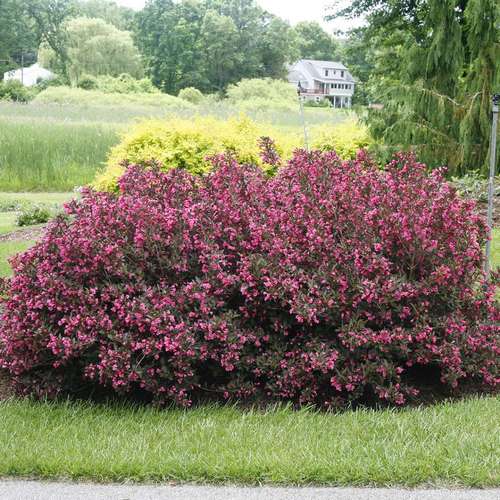 Image source: springmeadownursery
Image source: springmeadownursery
Hardy in zones 3 to 8, weigela is a plant that does well as a border or specimen shrub. It blooms from mid-spring all the way into mid-fall, making it one of the most breathtaking and longest-lasting perennials you will find. It produces bright green variegated leaves and purple blossoms (although other colors are also available).
14. Rose of Sharon
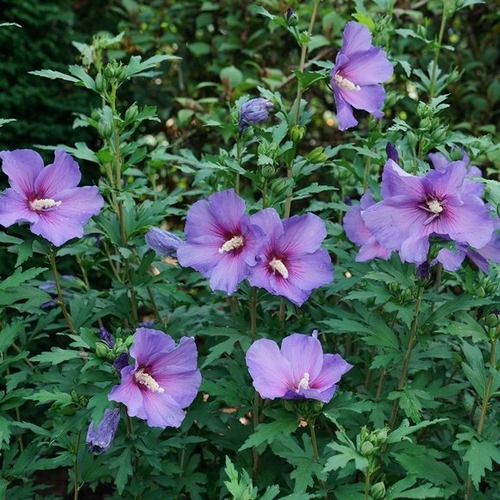 Image source: walmart
Image source: walmart
Some cultivars of rose of sharon produce blue flowers under the right growing conditions. However, these “blue” bushes are often more purple than blue, with plenty of cultivars sporting gorgeous lavender shades. One of the best varieties you can choose is ‘Lavender Chiffon,’ which grows up to 12 feet in height and is hardy to zone 5.
15. Rhododendron
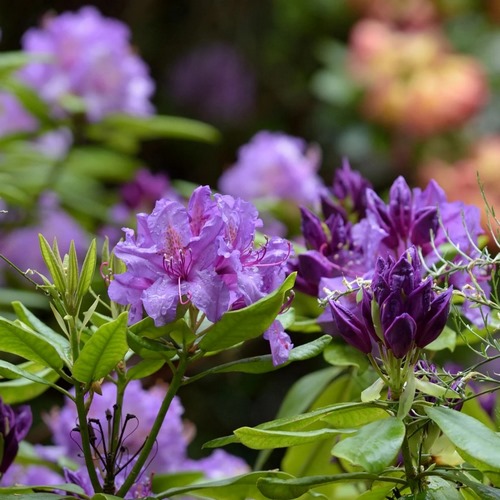 Image source: blomsterlandet
Image source: blomsterlandet
This purple shrub loves acidic soil and grows well in zones 4 to 9. There are plenty of options available – some rhododendrons grow more like trees, while others are shrub-like. You’ll want to choose a shorter rhododendron if you are in the market for a shrub. Tiny-leaved rhododendrons do best in full sun.
16. Roses
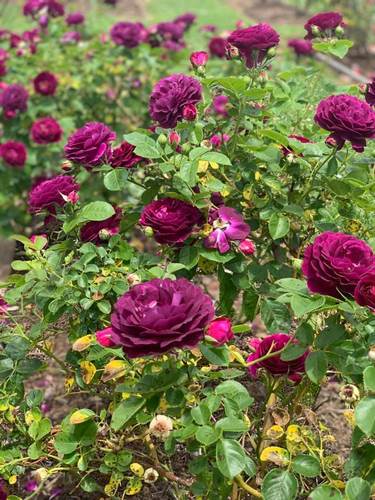 Image source: visittyler
Image source: visittyler
Believe it or not, there are rose bushes with purple flowers, too! Despite their names, both Rosa Rhapsody in Blue and Rosa Midnight Blue actually push out purple blooms. These rose bushes are highly fragrant and grow well in zones 6 to 10, with some plants sprawling to more than 4 feet wide and tall!
FLOWERS
16 Best Beautiful Flowers That Grow Easily in Any Conditions

You are a beginner! You don’t know what kinds of flowers to choose between many types. Check out the flowers below, they are easy-to-grow, brightly-grown flowers, and also promise to liven up your outdoor spaces.
1 Lavender
 Image source: plantindex
Image source: plantindex
Lavender is a hardy plant that doesn’t require a whole lot of care once established. Lavender thrives in the sunshine and dry soil.
2 Calendula
 Image source: gardeningknowhow
Image source: gardeningknowhow
One of the easiest annual flowers to grow from seed, calendula, or pot marigold, is a bright and beautiful addition to any garden. It adapts well to a wide range of growing conditions and thrives in USDA Zones 2 to 8. This plant tolerates any type of soil, although it must drain well and this self-seeding plant prefers full sun to partial shade.
3 Pansies
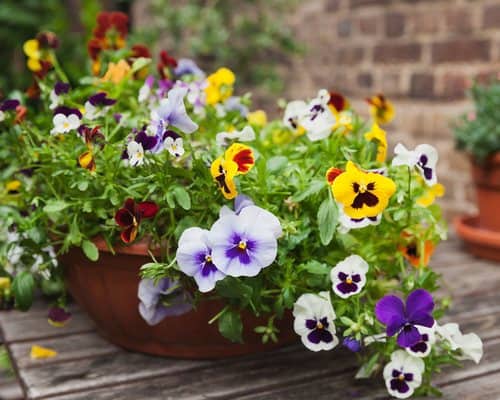 Image source: homesandgardens
Image source: homesandgardens
Pansies are so easy to nurture. It is a great recommendation for beginner gardeners. The pansy likes rich, well-drained soil, and full sun or partial shade. Deadheading the withered flowers is a must to encourage greater growth.
4 Dianthus
 Image source: americanmeadows
Image source: americanmeadows
There are many types of dianthus has a sweet and spicy smell similar to cinnamon or clove. They should be planted in full sun, with well-drained soil. Easily grown from seed.
5 Cosmos
 Image source: thisismygarden
Image source: thisismygarden
Cosmos is one of the easiest flowers to grow from seed. It prefers moist, well-drained soil that isn’t too rich, although it can grow in pretty poor soils too! Heat and drought-tolerant, the cosmos can grow anywhere between 18 and 60 inches tall depending on the variety.
6 Sunflowers
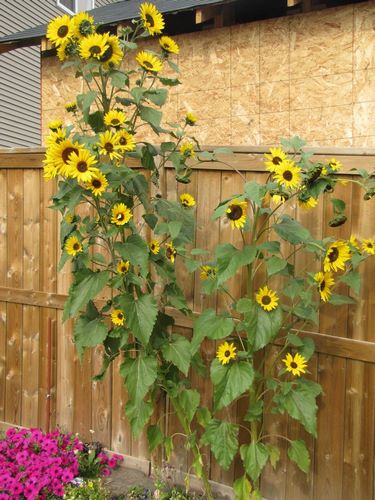 Image source: pinterest
Image source: pinterest
Sunflowers grow to between 6 and 16 feet tall, depending on the variety. Simply sow the seeds in a sunny, and sheltered spot. The hardy sunflower does well in most soil types (except waterlogged soil) and most varieties are tolerant to heat and drought. They attract bees and birds and will provide you with a bounty of seeds that are high in many essential nutrients like Vitamins E and B1, magnesium, and selenium.
7 Nasturtium
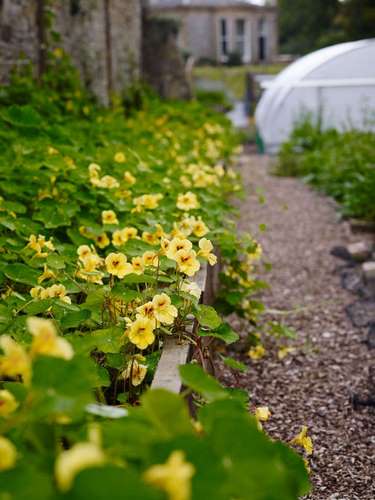 Image source: gardenista
Image source: gardenista
The fast-growing and colorful nasturtiums can be sowed directly into the ground. The only thing this low-maintenance plant will ask of you is regular hydration, let the soil dry between waterings, although the plant shouldn’t be parched.
8 Ornamental Alliums
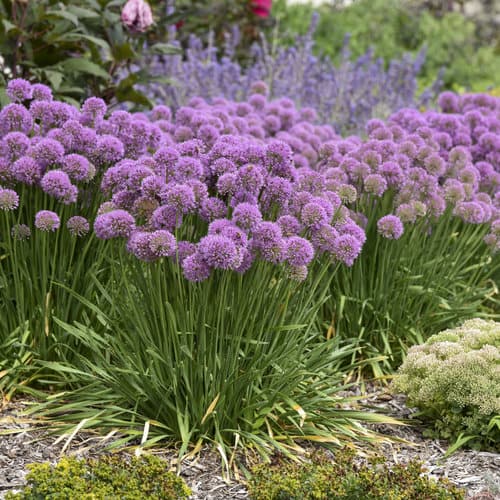 Image source: provenwinners
Image source: provenwinners
Ornamental alliums are hardy and undemanding so they should be grown in a sunlit area. They aren’t fussy about soil type, as long as it is well-drained; they don’t require much space and, best of all, they are relatively resistant to deer, voles, chipmunks, and rabbits!
9 Sweet Pea
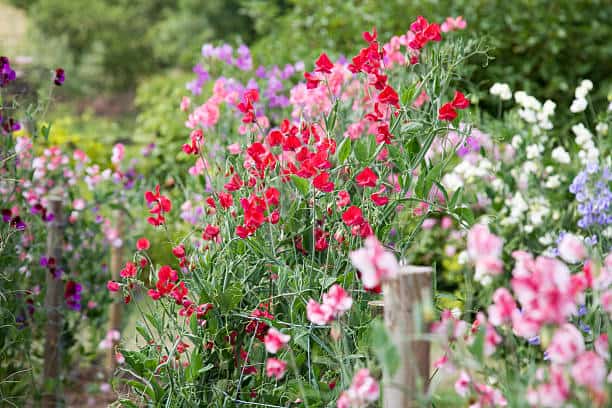 Image source: istockphoto
Image source: istockphoto
The beautifully scented sweet pea makes a wonderful addition to any garden, particularly as it requires so little care once established. Sweet peas like cool, but not cold, temperatures with their heads in the sun and their roots in cool, moist, and alkaline soil.
10 Marigold
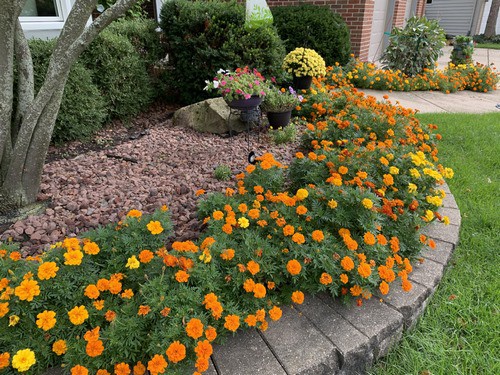 Image source: finegardening
Image source: finegardening
Marigolds are so very easy to grow. They grow quickly from seed. Sow them directly after the last frost in full sunlight (or up to a maximum of 20% shade). They are tolerant of dry, sandy soil, but don’t like to be overly damp.
11 Bachelor’s Button
 Image source: dengarden
Image source: dengarden
The Bachelor’s Button is low maintenance and thrives in poor, dry soil. Plant it in a position where it’s sure to receive morning sunlight, but partial shade during hot afternoons. It doesn’t require too much in the way of watering, but it becomes weak and floppy in soggy soil, and can also suffer stem rot and mildew.
12 Morning Glory
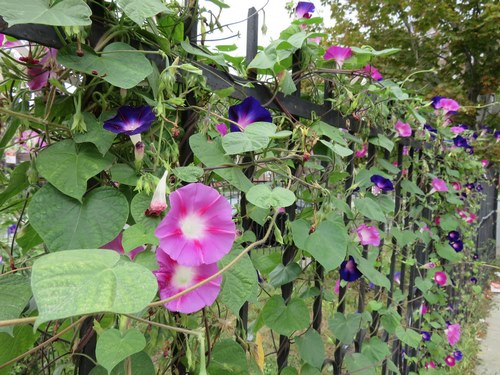 Image source: bbg
Image source: bbg
This plant is a hardy, quick-growing that requires little care! These annuals are self-seeding so you can enjoy them for years to come with minimal effort on your part. Perfect for covering walls and trellis, these beautiful purple, red, pink, or blue flowers flourish in full sun and moist, well-drained soil.
13 Hardy Geranium
 Image source: clcdesign
Image source: clcdesign
The hardy geranium is resistant to pests and disease, although they require well-drained, fertile, and moist soil. They prefer morning and afternoon sun and can handle partial shade well. Hardy geraniums are easy to grow from seed and even easier to cultivate from bare roots!
14 Lupines
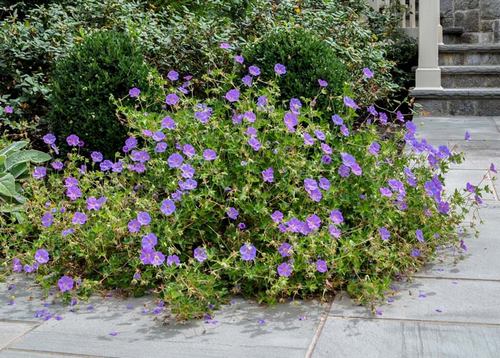 Image source: gardeningchannel
Image source: gardeningchannel
If you want to add color and texture to your garden bed, lupines are a great choice. Growing lupines is simple for everyone. Plant seeds or cuttings in a sunny area with average but well-drained soil. They do best in an area that hasn’t been amended by the application of compost or fertilizers.
15 Nigella
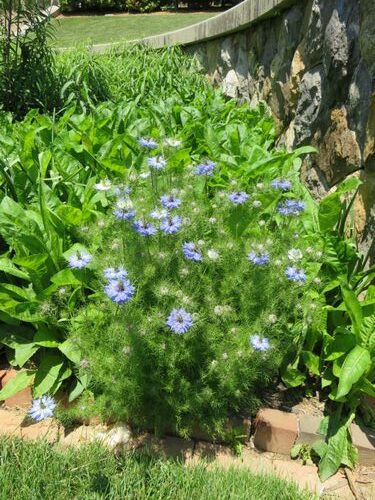 Image source: whatgrowsthere
Image source: whatgrowsthere
Nigella requires minimal maintenance, although it is a short-lived plant. It adapts to a variety of soil conditions, so it’s relatively easy to grow almost anywhere. For best results, sow your nigella seeds directly in the ground, in full sun to partial shade.
16 Fuchsias
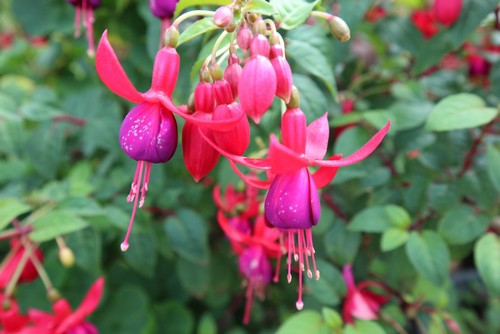 Image source: floraqueen
Image source: floraqueen
Fuchsias are beautiful and easy to grow, they bring a burst of color to the garden. With so many cultivars to choose from, you’ll have no problem finding one that suits your climate. To keep a healthy-looking plant, grow it in a shady location, and prune back weak and dead growth every so often to encourage new blooms.
FLOWERS
19 Beautiful Flowers That Bloom During Summer Season

Spring comes, it is the time for all flowers to display their beauty in the wind. But, there are still a lot of other flower species that also bring colorful and bright blooms in the harsh sunshine of summer days. If you want to bring the breath of brilliant summer into your garden design, the following flowers below are great options.
The hot weather with the temperature rising makes most gardeners find it rather tiring to work. So, growing these stunning flowers in the garden will provide several benefits like regulating the air, reducing the temperature, giving psychological comfort, and human health.
1 Marigold
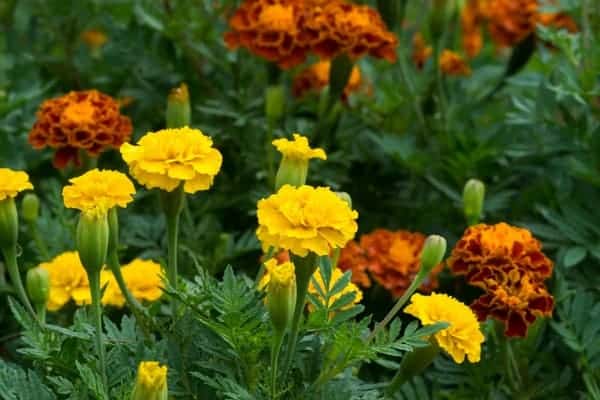 Image source: ugaoo
Image source: ugaoo
Often grown in vegetable gardens to keep off pests, French Marigolds are well-known to gardeners. They love warm weather and bloom continuously from spring until the first frost. They are easily grown from seeds, but the seeds collected from hybrids may not give the expected results. Use them as bedding plants in sunny areas. Regular watering is a must.
2 Rudbeckia
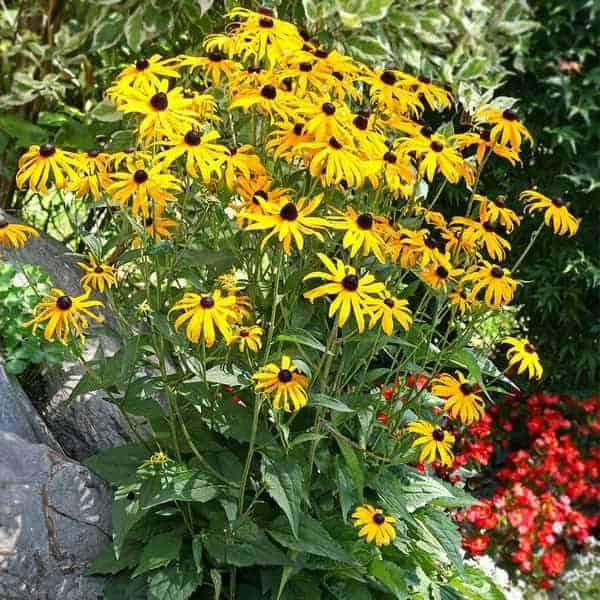 Image source: dobies
Image source: dobies
This is a wildflower that earned a rightful place in our gardens of its large flowers and profuse flowering habit. The contrast between the bright yellow petals and the brownish-black center disc makes these large, showy flowers all the more striking.
3 Hydrangeas
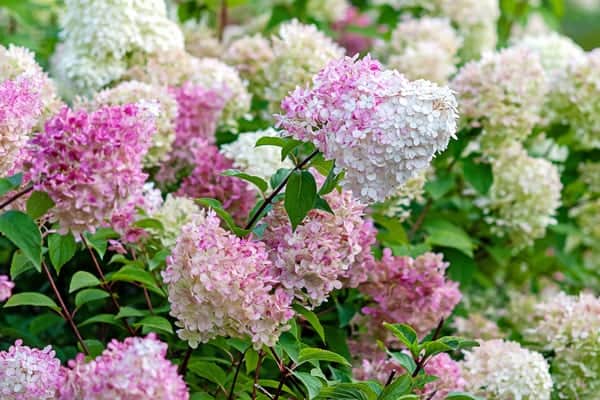 Image source: homesandgardens
Image source: homesandgardens
A profusion of long-lasting blooms starting from spring. The large flower heads keep coming all through summer and continue to adorn the plants long after the blooming season is over. They are propagated from cuttings, and they should be sited carefully taking into consideration the amount of sun and water they would receive. They prefer morning sun and afternoon shade in places with very warm summers but can take full sun for most of the day in cooler regions.
4 Dahlia
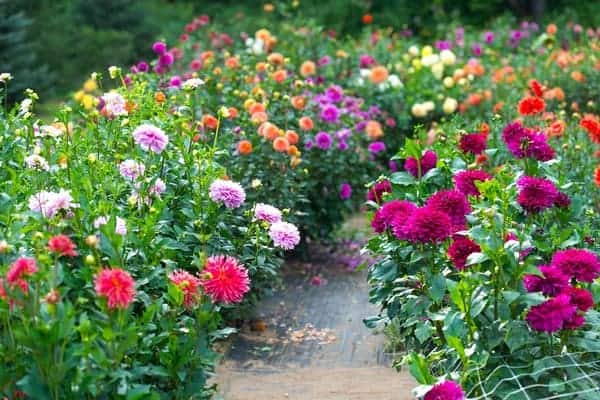 Image source: bhg
Image source: bhg
Although dahlias are perennials in warmer areas, reliably coming up from the ground in spring, they have to be started afresh from tubers in most parts of the United States.
5 Petunia
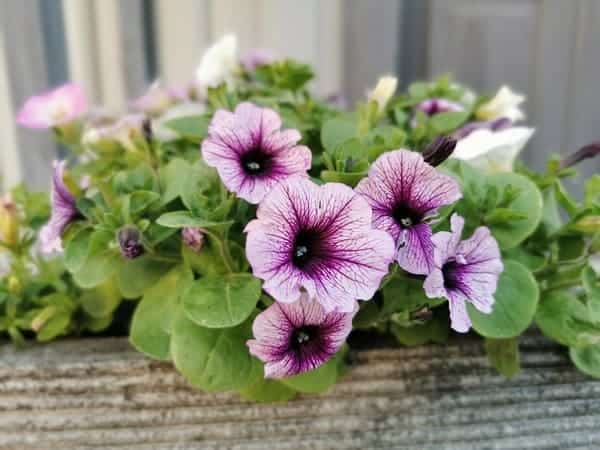 Image source: homesandgardens
Image source: homesandgardens
They grow as annuals and have one of the longest flowering seasons, right from mid-spring to late fall.
6 Bee Balm
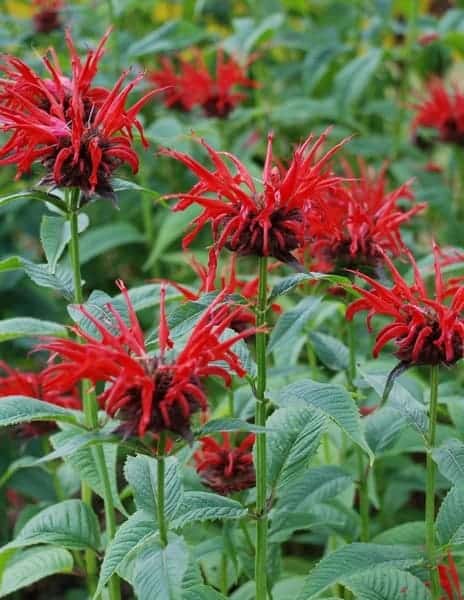 Image source: fieldtocottage
Image source: fieldtocottage
This North American native blooms from early summer to fall, producing whorls of tubular flowers around the tip of each branch. It can be planted in fall as well as in early spring. Choose a location with rich, well-draining soil. It does well in full sun as well as in part shade and attracts butterflies and hummingbirds. The flowers and leaves can be used to make herbal tea.
7 Aster
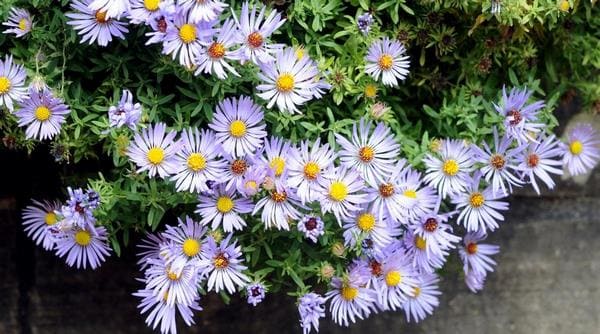 Image source: allaboutgardening
Image source: allaboutgardening
Asters can be started from seeds, but purchasing young plants is the best option. Plant them out in spring for summer blooming that usually extends to fall. They do well in both full sun and partial sun, but they can’t stand too much heat. Rich and moist soil with good drainage bring out the best in these beauties.
8 Yarrow
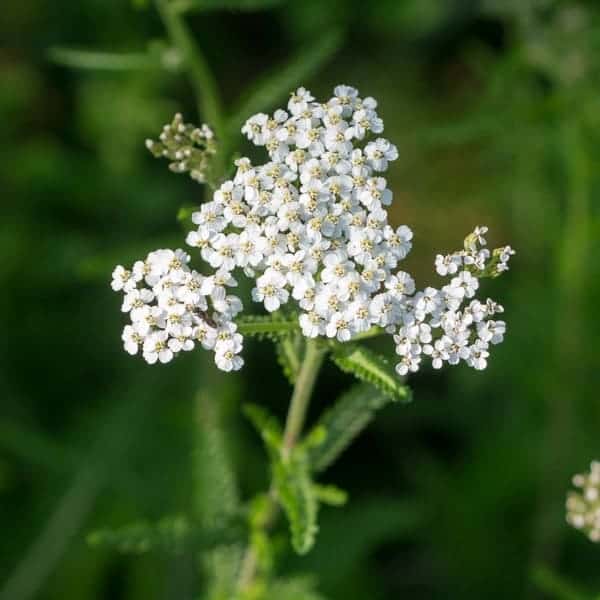 Image source: earthsongseeds
Image source: earthsongseeds
They can add color and variety to your summer garden with its long blooming season. Its leaves also are an asset, not to mention the medicinal value of the herb. Grow in full sun, but make sure that it stays within limits. The flat-topped flower heads look good in flower arrangements, so keep cutting them off to reduce self-seeding.
9 Catmint
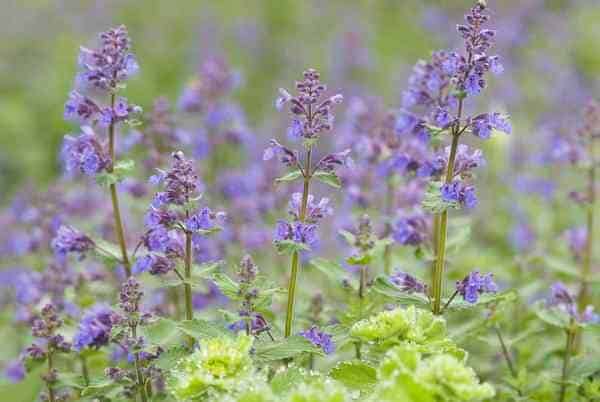 Image source: thespruce
Image source: thespruce
The bluish-purple flowers are tiny, but they are borne in abundance on long, slender, terminal flower spikes that stand above the silver-gray leaves. The flowering period is quite long, starting from mid-spring to fall. The plants are drought resistant and do well in both full sun and partial shade.
10 Purple Coneflower
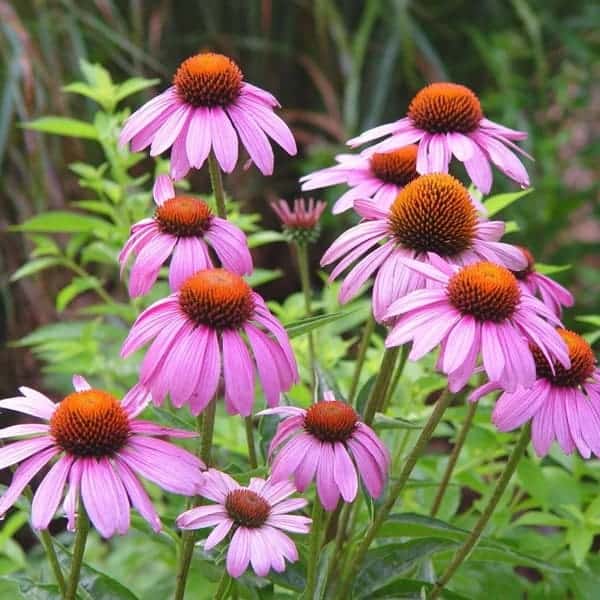 Image source: sejahteraseeds
Image source: sejahteraseeds
Flowering all through summer and into fall, its flowers can be harvested for making herbal tea. In fact, all parts of the plant have medicinal properties.
11 Rose Of Sharon
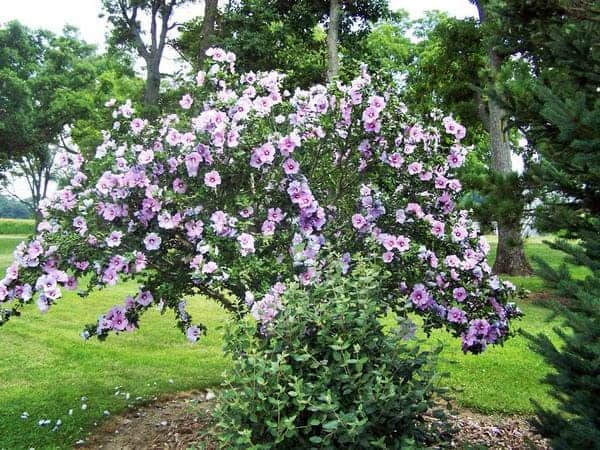 Image source: garden
Image source: garden
Rose of Sharon is a perennial hibiscus. Grow hardy hibiscus in rich, well-draining soil in a sunny location. They appreciate some afternoon shade in areas with hot summers. Keep the soil moist with regular watering and mulching. Give it an occasional feeding to help the plant continue flower production.
12 Gaura
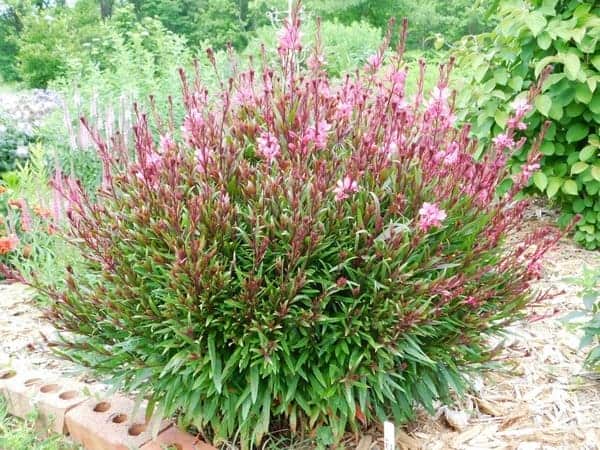 Image source: plants
Image source: plants
This wildflower is a North American native, forming large perennial stands, crowding out all the competitors. They are sometimes called bee blossoms, but the four-petalled flowers have more in common with butterflies. In a gentle breeze, the tall spikes carrying white blossoms appear to be covered in fluttering butterflies. It is easily propagated from seeds or the division of rhizomes.
13 Canna Lilies
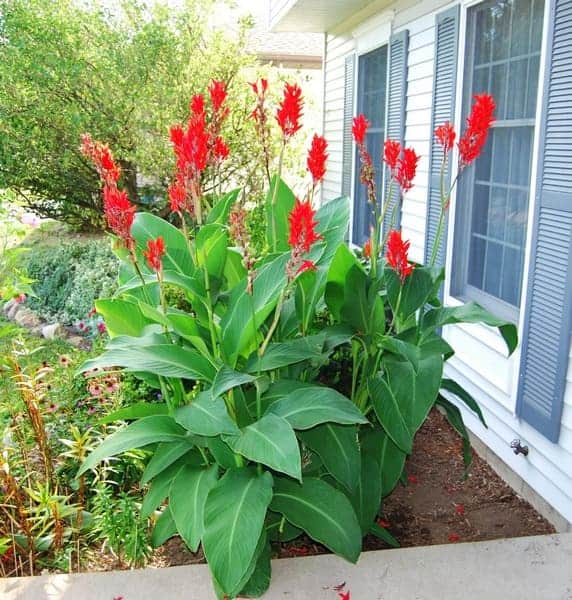 Image source: goerie
Image source: goerie
They are perennials with bold foliage and bolder flowers. They start blooming in late spring or early summer depending on the zone and continue through summer and fall. The sunny location and ample moisture in the soil are ideal for lush growth and flowering.
14 Coreopsis
 Image source: thespruce
Image source: thespruce
Commonly called Tickseed, the low-growing coreopsis is an old-time favorite. It is actually a perennial in warmer regions but is more often grown as an annual elsewhere. Grow coreopsis in a sunny area. They are great as ground covers and bedding plants.
15 Snapdragon
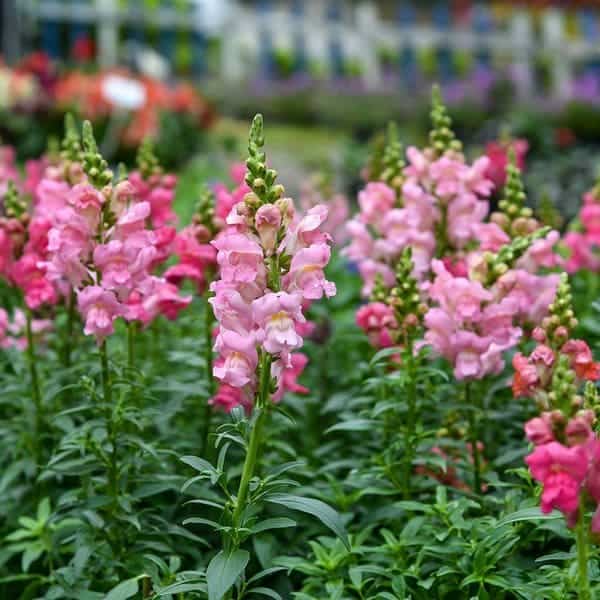 Image source: edenbrothers
Image source: edenbrothers
Another reliable annual with a long flowering season, snapdragons were an old favorite in summer gardens. Start plants from seeds or cuttings, and plant them in spring. Pinch the young plants to induce branching. You get only as many spikes as the number of branches they have.
16 Zinnias
 Image source: plants
Image source: plants
Zinnias love warmth, so they are reliable summer bloomers, filling the garden with long-lasting flowers in jewel colors. Grow these annuals in a sunny location. They flourish in hot weather but appreciate regular watering and feeding.
17 Gaillardia
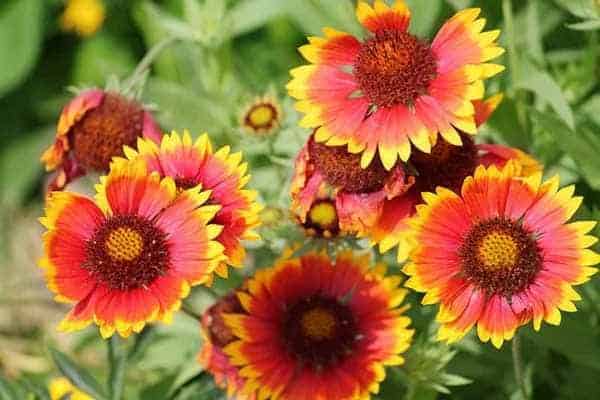 Image source: trees
Image source: trees
Gaillardia is another summer flowering plant that never seems to get tired of blooming all through the season and beyond. These short-lived perennials live longer if they are divided every 2-3 years. There are annual gaillardias too, which can be easily started from seeds.
18 Globe Amaranth
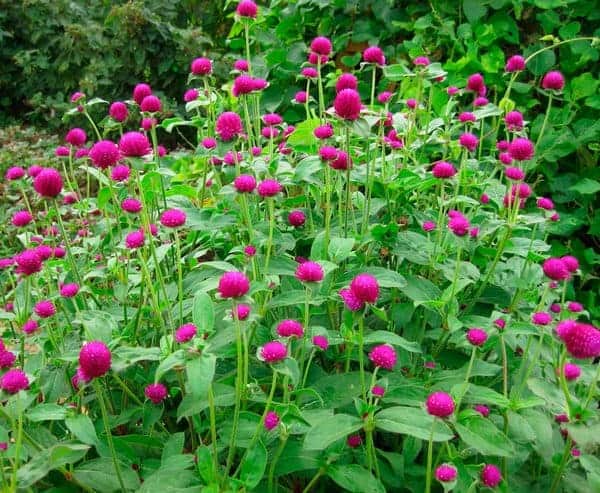 Image source: gardencultura
Image source: gardencultura
The compact mounds of globe amaranth are usually covered in globular flowerheads all through summer and fall since they continue to persist on the plants. Purple is the most common and popular color, but you can find them in light pink, lilac, white and red too.
19 Daylilies
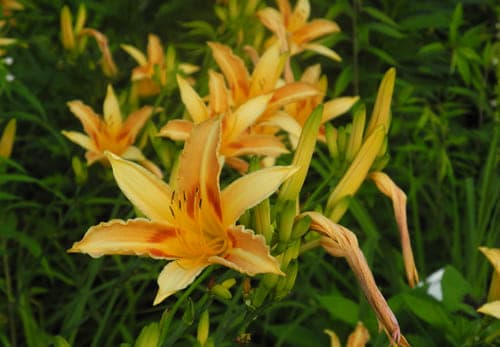 Image source: daylilygarden
Image source: daylilygarden
Daylilies bloom from spring to fall. Each flower lasts for just one day, but a succession of them opens up day in and day out, ensuring that your garden looks cheerful throughout.
FLOWERS
9 Best Beautiful Summer Blooming Bulbs

Looking for plants to add some color, texture, height, and drama to your garden during the summer season, our list today has perfect options. They produce stunning and colorful flowers along with gentle, sweet fragrances. Also, they are easy to grow in any area of your garden. Some can go in the ground, others need to be lifted and stored depending on location, or you keep them in pots or containers.
#1 Liatris
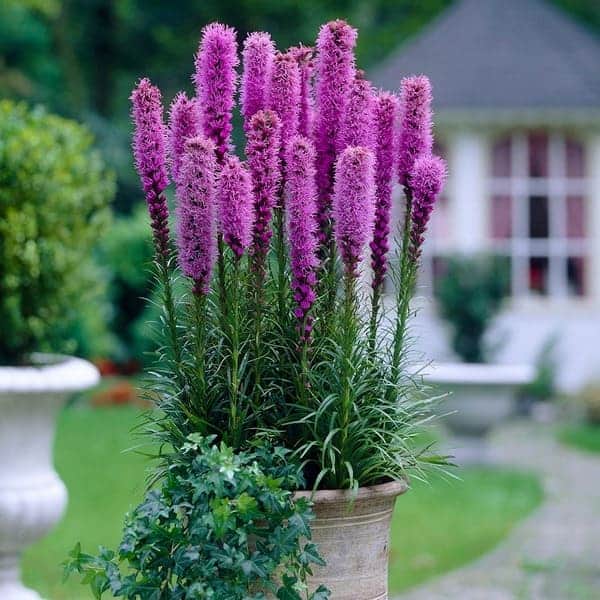 Image source: plantcetera
Image source: plantcetera
Liatris is a perennial plant that grows well on hot summer days. For best growth, give this flower direct sunlight for at least 6 hours per day. It will reward you with gorgeous flower stalks, and attract a lot of bees and butterflies as well.
#2 Oriental Lilies
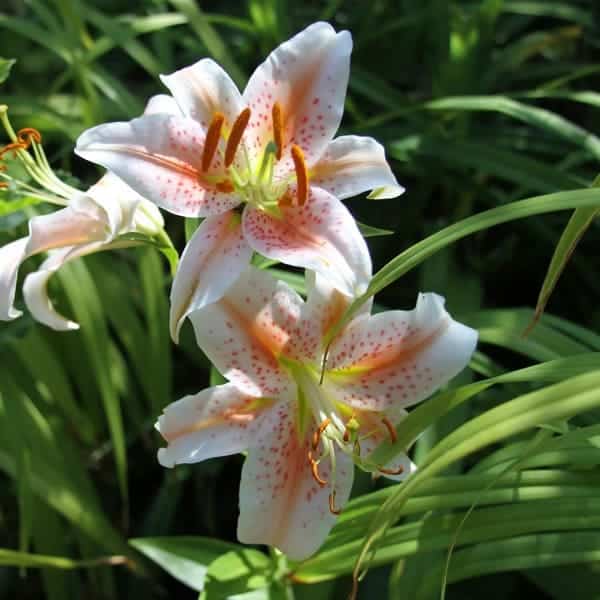 Image source: spokesman
Image source: spokesman
This flower is one of the most dramatic lilies that shows off star-shaped flowers in the shades of yellow, crimson, white, and pink. Provide moist soil, good drainage, and full sunlight for happy growth.
#3 Oxalis
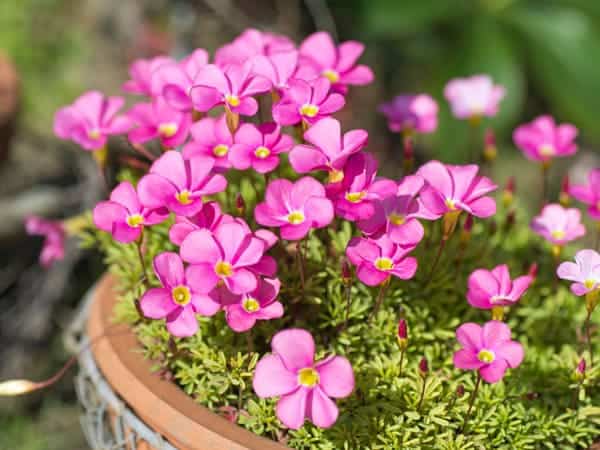 Image source: plantindex
Image source: plantindex
Oxalis is an easy-to-grow summer flower. It does well in moist, well-drained soil, full sun, or partial shade. Its flowers come in different colors purple, white, and delicate pink.
#4 Colocasia
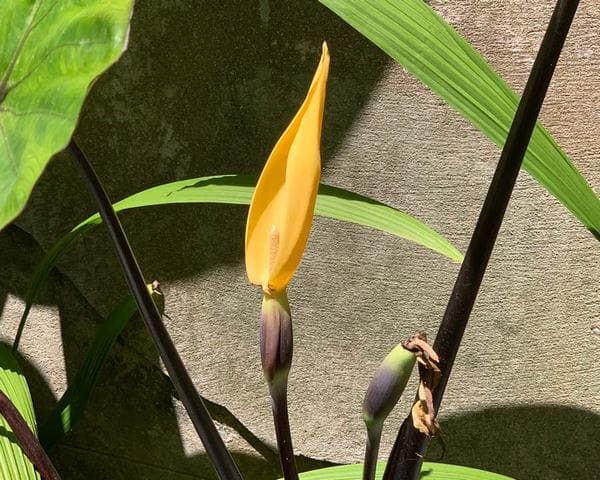 Image source: gardensonline
Image source: gardensonline
As called taro, the Colocasia is preferred to grow in the garden by its large leaves with wide colors including green, black and purple. Growing it will bring a fresh tropical look to the landscape.
#5 Hippeastrum
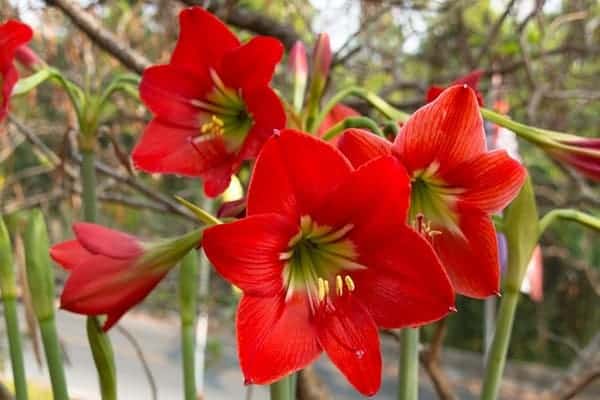 Image source: gardenerspath
Image source: gardenerspath
Hippeastrum bears stunning flowers from early to late summer to liven up any outdoor spaces. To enjoy its bright beauty in the hot season, you should start growing it in winter. Grow them directly in the ground or in large pots.
#6 Calla Lilies
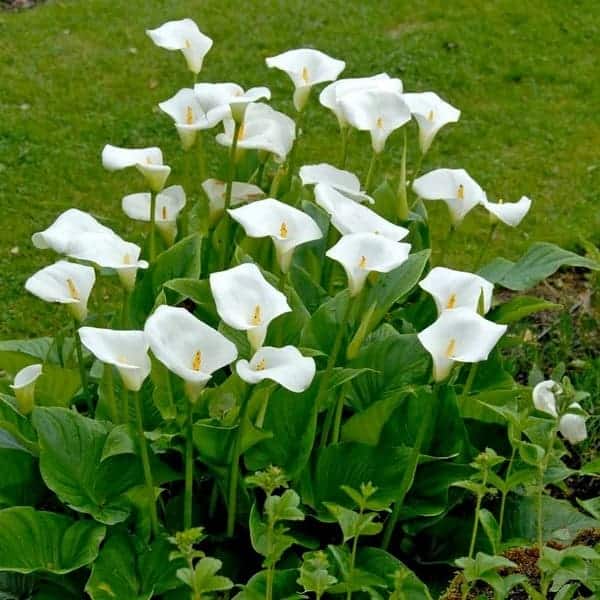 Image source: americanmeadows
Image source: americanmeadows
There is a wide range of colors but most varieties of Calla Lilies have shades of white. This flower grows well in moist soil and full sun or part shade.
#7 Tiger Lily
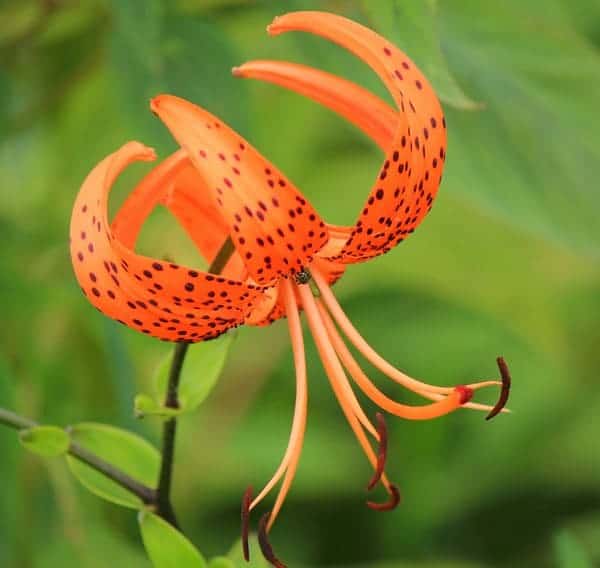 Image source: gardeningknowhow
Image source: gardeningknowhow
Tiger Lily is an easy-to-propagate flower from the bulb offsets and also from the bulbils. Its flowers attract some species of native bees.
#8 Allium cernuum – Nodding onion
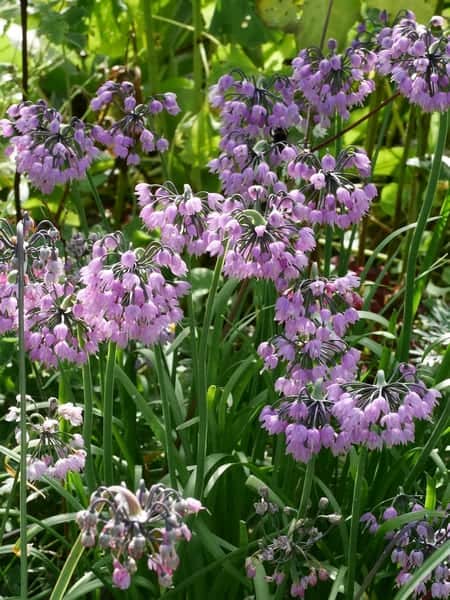 Image source: edimentals
Image source: edimentals
The flowers of the Allium cernuum are sphere-shaped and bloom in late summer. Its stunning bulbs can appear in pink or white shades and is edible as well as ornamental.
#9 Caladiums
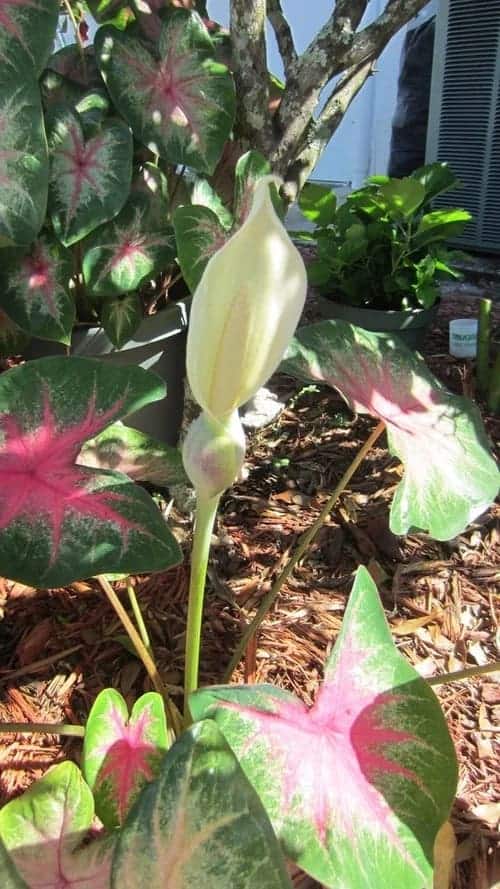 Image source: pinterest
Image source: pinterest
Caladiums grow well both on the ground outdoors and in vases indoors and can reach two feet tall. To grow happily, it needs moist, well-drained soil and prefers full shade.

 GARDEN1 năm ago
GARDEN1 năm ago4 Easiest Ways to Get Free Plants

 DIY & CRAFT1 năm ago
DIY & CRAFT1 năm ago17 Inexpensive DIY Garden Walkway Ideas

 GARDEN1 năm ago
GARDEN1 năm ago8 Amazing Coca-Cola Uses

 FLOWERS1 năm ago
FLOWERS1 năm ago6 Best Flowers That Can Propagate Easily from Cuttings

 BATHROOM1 năm ago
BATHROOM1 năm ago24 Creative and Unique Bathroom Sink Ideas

 BATHROOM1 năm ago
BATHROOM1 năm ago30 Clever Ways to Use Plants In Your Bathroom

 FLOWERS1 năm ago
FLOWERS1 năm ago6 Beautiful Windflowers to Enhance Your Landscape

 ANIMALS8 tháng ago
ANIMALS8 tháng agoAbandoned Cat Finds Happiness in New Home Despite Being ‘Too Affectionate







